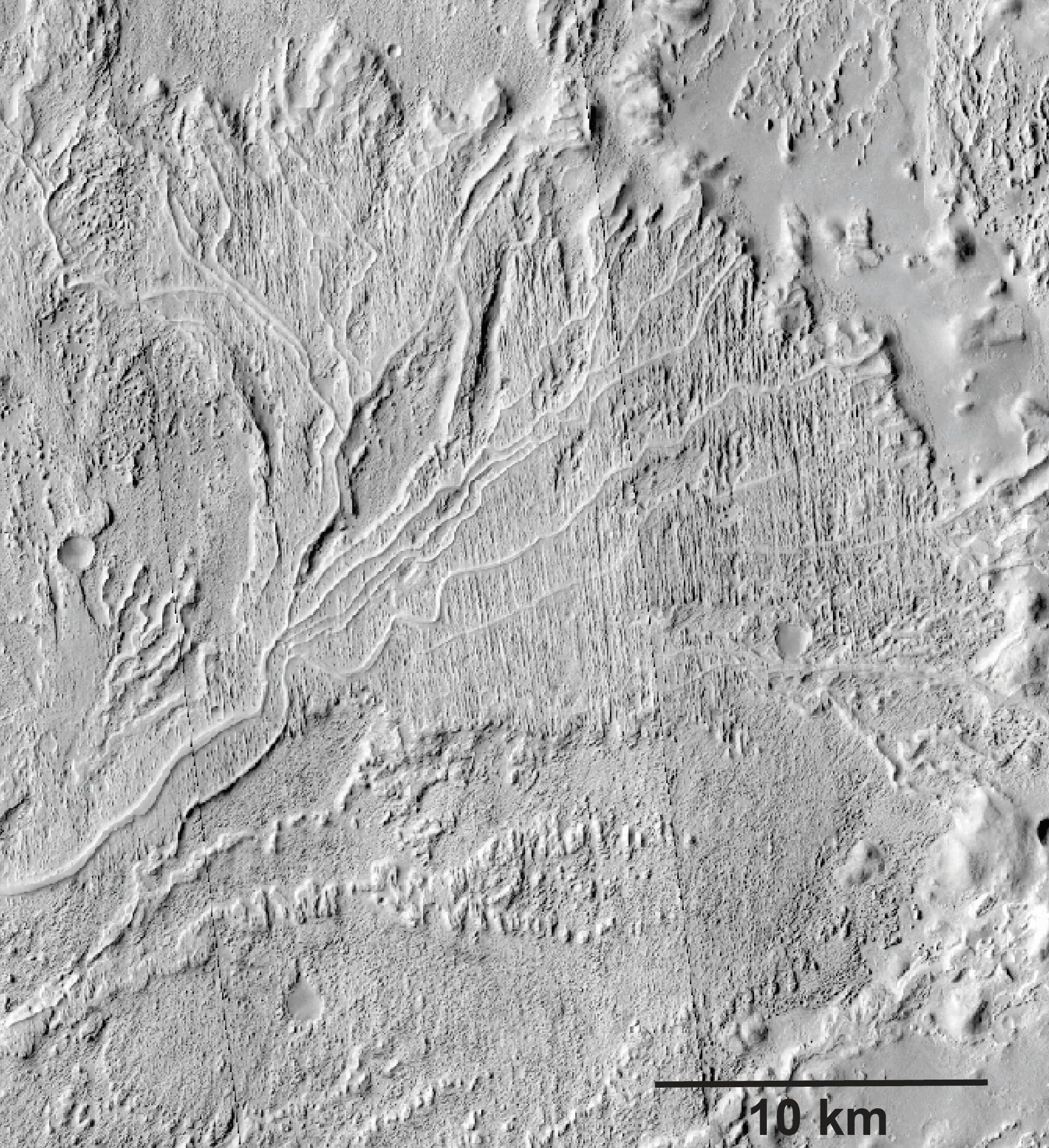Post by Jacob Adler, School of Earth and Space Exploration, Arizona State University.
Ancient river deltas are found in many locations on Mars [see Di Achile & Hynek, 2010 and references therein], and are formed as sediment drops out of suspension in water as it approaches a wider shoreline of a lake, sea, or (debatably) an ocean. Some proposed deltas on Mars are found in closed basins (e.g. an impact crater) away from the Martian dichotomy boundary, implying an ancient climate during which the crater ponded with water [e.g. Eberswalde or Jezero]. Occasionally, inlet and outlet river valleys are seen at different elevations along the crater rim, lending further evidence to the hypothesis that the crater filled with liquid water at least up to the outlet elevation. Deltas found in open basins, on the other hand, imply a larger body of standing water, and Mars scientists look for other clues to support the deltaic rather than alluvial fan formation mechanism. In our recent papers, we tested whether the Hypanis fan-shaped deposit (Image 1) could be a delta, and discussed whether this supports the hypothesis that there was once a large sea or ocean in the Northern plains of Mars [Adler et al., 2018; Fawdon et al., 2018].

Image 1: a) The Hypanis deposit stands out as light-toned in the center of this Mars Reconnaissance Orbiter (MRO) Context Camera (CTX) mosaic of our study region. Also marked are Lederberg crater, and the Sabrina deposit in the closed basin of Magong crater. (b) Hypanis and Sabrina have a low nighttime temperature (dark) as recorded by the THEMIS instrument on Mars Odyssey, suggesting it is mostly composed of small grain size material. Image from the Nighttime IR 100m Global Mosaic v14.0 [Hill et al. (2014); Edwards (2011)] and from the Northern Hypanis Valles Night IR Mosaic [Fergason (2009)]. NASA/JPL/ASU. (c) Our proposed fluvial sequence discussed in the paper. Main lobe (A) could once have had continuous layered beds spanning to the distal island deposits (E). The cross-cutting relationships we observed are consistent with hypothesized shoreline regression to the north. Flow migrated to the northern lobe (B), then to braided inverted channels (C and D) as water retreated. NASA/MSSS/USGS. d) Our digital elevation mosaic shows the topography of Hypanis and surrounding features. Elevations are colored from white (-2500 m) to light green (-2800 m).
Posted by Tjalling de Haas on September 1, 2018
https://planetarygeomorphology.wordpress.com/2018/09/01/the-largest-delta-on-mars/










